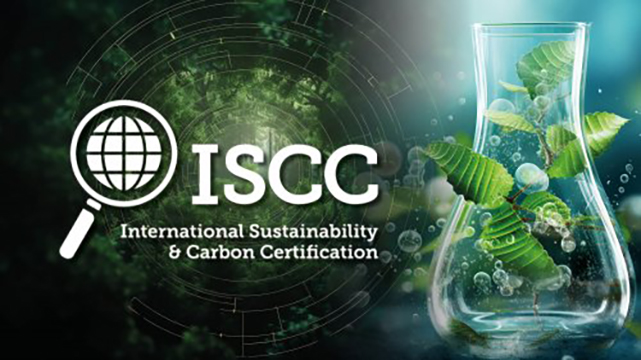More news
- Focus on industrial: Powering the energy industry during extreme heat
- Focus on powder coatings: The coatings industry’s transition to PFAS/PTFE-free solut...
- “We see sustainability as a purpose, as a reason for doing business” – P...
- Focus on industrial: High-performance coating protects tanks at biopolymer production plan...
- Focus on powder coatings: Novel high-speed crosslinking technology

Ahmad Pathoni, Kathryn Wortley, Mini Pant Zachariah, Poorna Rodrigo and Jens Kastner report for PPCJ on the latest regulation updates in Asia, including Vietnam’s new regulations surrounding the required colour of Border Guard boats
Vietnam
Vietnam’s Ministry of National Defence has issued a Circular 88/2023/TT-BQP regulating colours, flags, badges, signals of ships, aircraft, motorbikes and other vehicles operated by the country’s Border Guard. The Circular is likely to spur repainting jobs as it instructs the Border Guard to review its vehicles’ colour and insignia, changing them if they fail to meet the new standard. Vessels performing the task of managing and protecting national borders must have hull and cabin painted in light gray and the deck painted green. Hulls of search and rescue boats must have an orange hull, white cabin and green deck. Lower and upper airplane fuselages must be green and white respectively; wings must be painted white.
Indonesia
As construction ramps up, paint and coatings companies are eyeing lucrative opportunities in Indonesia’s new capital Nusantara, with several recent project launches promising a significant boost to the industry. Outgoing President Joko Widodo recently inaugurated several key projects in Nusantara, including the emerging city’s international airport, hospitals, schools and housing. Several ongoing projects promise to further fuel the demand for coatings including a new presidential palace, the parliament building and smart city infrastructure.
Nusantara’s focus on sustainability presents a unique opportunity for eco-friendly coatings, the government has stressed. It has mandated the use of green building materials, including paints with low volatile organic compounds and recycled content.
Malaysia
Malaysia’s ambitious government-funded rail and solar projects are creating new opportunities for the coatings industry, as demand for several types of coatings rises along with the construction and expansion of infrastructure. A planned high-speed rail (HSR) line between Kuala Lumpur and Singapore will require fire-resistant coatings for tunnels and bridges and durable coatings for high-speed trains that can withstand elevated temperatures and friction.
Mass rapid transit (MRT) projects, which aim to improve public transportation in Kuala Lumpur and other major cities, will also drive demand for coatings for stations, tunnels, and rolling stock.
Meanwhile, the government is also pursuing a renewable energy agenda, with a target to increase the country’s solar power capacity to 20% by 2025. This will create demand for specialised coatings for solar panels that can resist corrosion, UV rays and moisture, and maintain their efficiency over time.
READ MORE:
China
China’s ministry of industry and information technology (MIIT) announced in December (2023), that a standard ‘Technical Requirements for Low VOCs High/Ultra-High Solids and Solvent-free Epoxy Coatings’ (T/CNCIA 01005-2022) has been selected for promotion within a government standard demonstration project. The standard was the first Chinese-English bilingual standard submitted by the China National Coatings Industry Association and promotes the technological progress of high-solid and solvent-free coatings in China, aiming to improve the industry’s sustainability.
Taiwan
The Taiwan environment ministry in November (2023) has tightened its waste regulations for asbestos waste, which will impact construction materials painted with coatings that integrated this toxic material during the 20th century – the practice is now banned. An amendment to Taiwan’s ‘Measures on recycling, removal and treatment of general waste’ will strengthen the management of the classification, storage, discharge, removal and treatment of asbestos waste generated from building demolition. Painted asbestos tile waste should be treated with moisture first, then double-layer plastic bags should be packed and tightened in a strong container to prevent asbestos fibres from escaping.
The Philippines
The Philippines’ toxics watchdog group EcoWaste Coalition announced in January (2024) that all 31 bright-coloured paint products it recently submitted to global testing company SGS for lead content analysis contained lead exceeding 90 parts per million (ppm). This is the maximum limit for lead in paint products under the department of environment and natural resources’ DENR A.O. 2013-24, also known as a Chemical Control Order (CCO), regulating lead and its compounds within coatings in the archipelago. The products were mostly imported from China and Thailand. None of these lead-containing paints were manufactured, imported or distributed by member companies of the Philippine Paint and Coatings Association.
READ MORE:
EcoWaste Coalition warns against leaded paints with “No Pb” symbol
South Korea
South Korea’s National Institute of Environmental Research (NIER) has issued a preliminary notice revising its Notice on Designation of Toxic Substances procedures. The changes amend how the regulator confirms the nature of chemical substances, issues hazardous chemical business licenses and controls the labelling of hazardous chemical substances. It changes the model for declarations of import of toxic substances into South Korea; amends the country’s chemical accident prevention and management plan; alters standards for handling hazardous chemicals; and amends standards for installation and management of hazardous chemical handling facilities.
Australia
Australia is planning to add close to 600 entries to its ‘List of chemicals with high hazards for categorisation’ commonly known as ‘the List,” the government said in a note published on January 25. Public consultations, now open regarding these changes, will close on February 22. The new entries include chemicals such as benz[a]anthracene and bis(α,α-dimethylbenzyl) peroxide used in adhesives, paint and coatings. The List, which has not been updated for the last four years, will now be updated annually, unless an urgent change is needed, said the government’s department of health and aged care.
Thailand
The IRPC Public Company Ltd – a subsidiary of Thailand’s state-owned oil and gas company PTT, along with the Bayer Co Ltd in Thailand, has developed innovative paint and coating products incorporating polytetrafluoroethylene (PTFE), which are durable against harsh weather conditions. The new coatings can help triple the lifespan of steel structures, suitable for coating in oil refineries, petrochemical plants, airports, ports and bridges, the company has said. The latest development is part of the IRPC’s ‘diversification plan’, aiming for net zero emissions by 2060. The state-owned company, whose core business includes petrochemicals, is hoping to invest more in paints and coatings, to boost the variety of its output.
India
The Indian government in a Gazette of India notification dated January 30, 2024, has deferred the implementation of official ‘quality control orders’ (production standards) for four chemicals morpholine, acetic acid, methanol and aniline, all used in the paints industry. The government’s department of chemicals and petrochemicals has noted that the implementation date for the morpholine order has been advanced from February 1, (2024), to August 1, 2024. For acetic acid, methanol and aniline this deadline has been deferred from February 3, 2024, to August 3, 2024.
Japan
The Japan Paint Manufacturers Association (JPMA) has updated its list of certified paints for fire prevention materials as of January 16, 2024, in accordance with the country’s Building Standard Law, last revised in 2002, issued by the ministry of land, infrastructure, transport and tourism. Certifications now total 332 products from 29 companies including some of the country’s largest paint manufacturers such as Kansai Paint and Nippon Paint. The products fall into three categories: inflammable materials, quasi-incombustible materials and flame-retardant materials. Government-approved certifications for fire-retardant materials can be obtained on request from each paint’s respective manufacturer.







